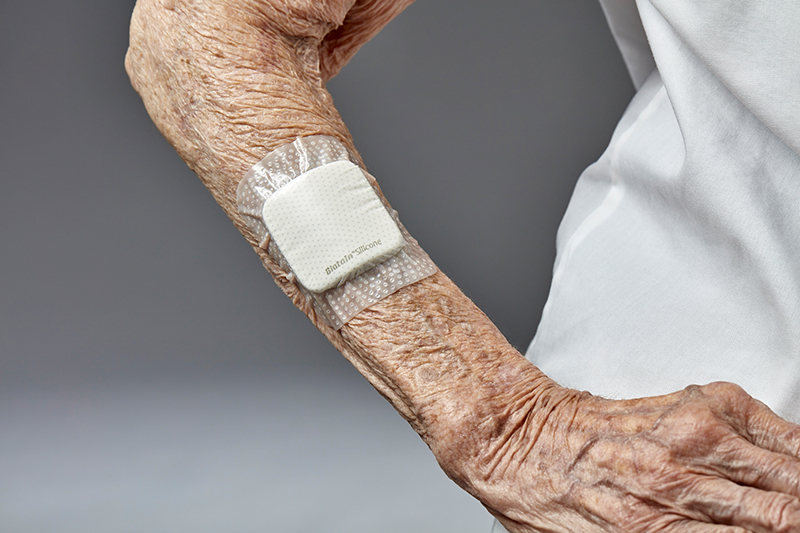Get full access with a free account
Benefits of the Coloplast® Professional Educational platform
- Get full access to all educational content, events and resources
- Track your progress
- Share content with your collegues
- Share supporting material with your patient
How to treat skin tears
In this section, you’ll learn:
How to treat skin tears
When you treat a skin tear, you should have three main goals:1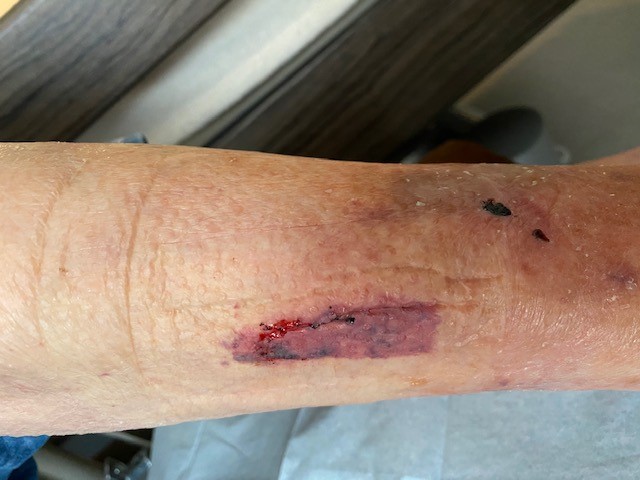
- Preserve the skin flap and maintain the surrounding tissue;
- Re-approximate the wound edges (without stretching the skin); and
- Reduce the risk of infection and further injury.
The Skin Tear Decision Algorithm will help you to do that.1
Using the Skin Tear Decision Algorithm
To treat a skin tear, follow these five steps:1
Step 1: Assess the wound. Be sure to control the bleeding.
TIP: The Triangle of Wound Assessment can be a useful tool to help you conduct a holistic wound assessment.
Step 2: Cleanse the wound.
Step 3: Approximate the wound edges. Find out which type of skin tear it is, using the classification system. Be sure to measure and document the wound.
Step 4: Set out your treatment goals. This would include:
- treating the cause;
- implementing the prevention protocol;
- using moist wound healing;
- avoiding trauma;
- protecting the periwound skin;
- managing exudate;
- avoiding infection; and
- controlling the pain.
Step 5: Choose your treatment option. You should base your choice on the type of skin tear your patient has.
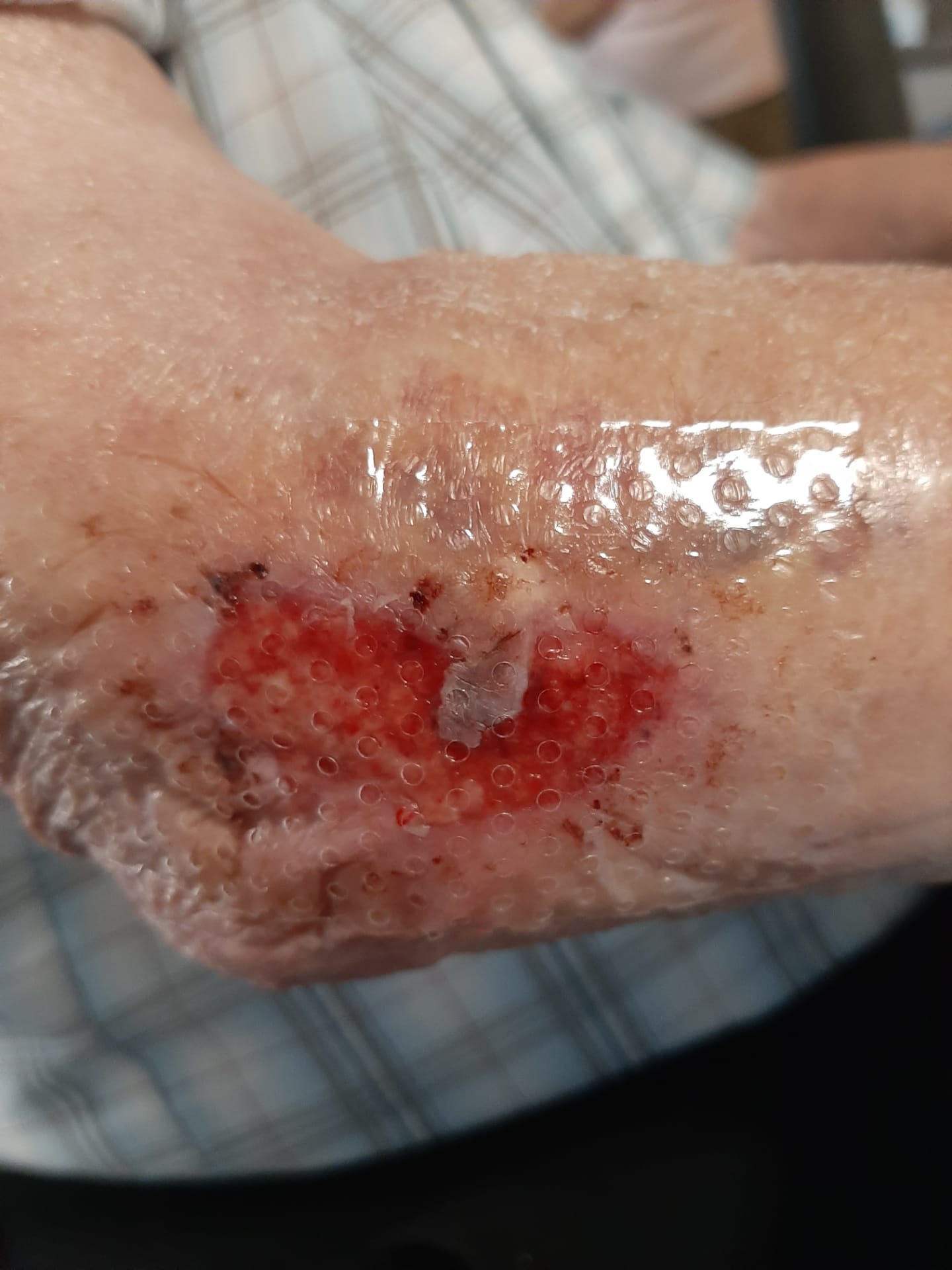
Choosing the right dressing
Table 1 outlines different dressing options based on the skin tear type.
Working with dressings
There are some basic tips you can follow with all dressings that will help protect your patient’s skin and promote wound healing. Try:1
- marking the dressing with an arrow so it’s clear which way it should be removed.
- using an adhesive remover when you remove the dressing. This will minimise trauma.
- removing the dressing slowly.
- using a skin barrier product to protect the surrounding skin.
- using an emollient to soften and smooth the skin around the wound. This will help prevent additional tearing.
NOTE: You should continue to monitor the wound for changes or signs of infection. If the wound doesn’t improve (e.g. after four assessments) or if it gets worse, refer your patient to an appropriate specialist.1
If your patient has fragile skin
When your patient has vulnerable skin, you want to select a dressing that:1
- controls bleeding;
- is easy to put on and take off;
- doesn’t cause trauma when you remove it;
- optimises the healing environment;
- allows for an extended wear time;
- is non-toxic; and
- is flexible and molds to the shape of the wound.
Table 1: Dressing selection guide1
|
Dressing type |
Skin tear type |
When to use it |
What to keep in mind |
|
Foam dressing |
2, 3 |
With wounds that have moderate exudate, or where the patient will have the dressing on for a longer period of time (2-7 days, depending on the level of exudate) |
Use a non-adhesive version when possible. This will help to avoid damage to the surrounding (periwound) skin. Note: Doesn’t apply to silicone border products. |
|
Calcium alginates |
1, 2, 3 |
With wounds that have moderate to heavy exudate. This type of dressing can also help stop minor bleeding (i.e.is haemostatic). |
Can dry out the wound bed if the exudate level isn’t high enough. You need to use a secondary cover dressing with this type of dressing. |
|
Gelling fibres |
2, 3 |
With wounds that have moderate to heavy exudate. |
These dressings don’t have any haemostatic properties. They can dry out the wound bed if the exudate level isn’t high enough. You also need to use a secondary cover dressing with this type of dressing. |
Additional treatment options
Wound closure strips can be an effective treatment to bring the wound edges together. By using these strips, you can close the wound without creating tissue tension.2 Compression therapy can also be effective when treating skin tears. It helps reduces the harmful effects of oedema (i.e. fluid accumulation in the tissues surrounding the wound).2 It also decreases the risk of blood clots forming (deep venous thrombosis).3,4 You can use compression therapy on most traumatic wounds.
References
- ISTAP Best Practice Recommendations for the Prevention and Management of Skin Tears in Aged Skin 2018
- Acute Wounds. Identification, assessment and management of acute wounds. Coloplast HEAL course.
- Sachdeva, A., Dalton, M., Amaragiri, S.V., Lees, T. (2010). Elastic compression stockings for prevention of deep venous thrombosis. Cochrane database of Systematic review(7), 1-55.
- Sachdeva, A., Dalton, M., Amaragiri, S.V., Lees, T. (2014). Graduated compression stockings for prevention of deep vein thrombosis (review). Cochrane database, Cochrane database of systematic reviews 2014(12).
You may also be interested in…
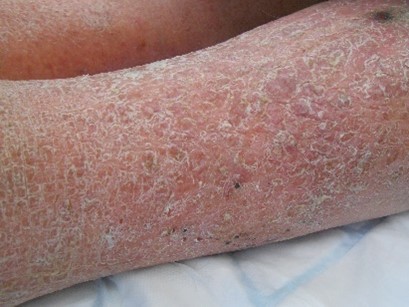
HEAL e-learning
Learn about the function and structure of the skin with this EWMA-endorsed course.

Consensus publication
Learn more about how to involve patients in their care plan and conduct a holistic assessment.
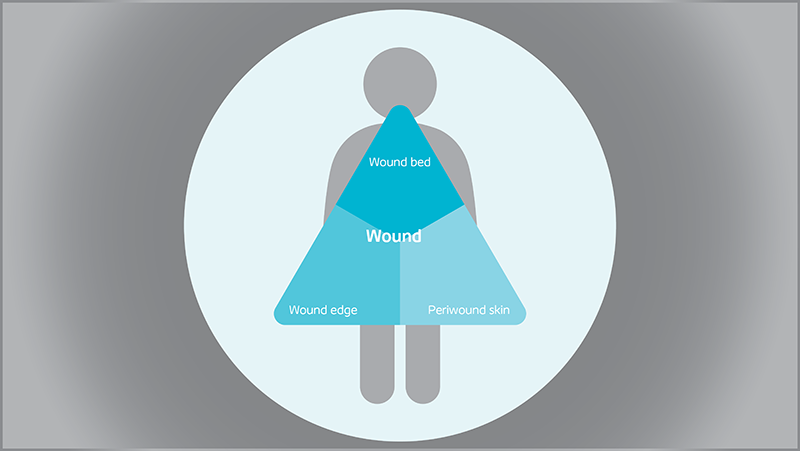
Triangle of Wound Assessment
Conduct a holistic and systematic wound assessment with our tool.

